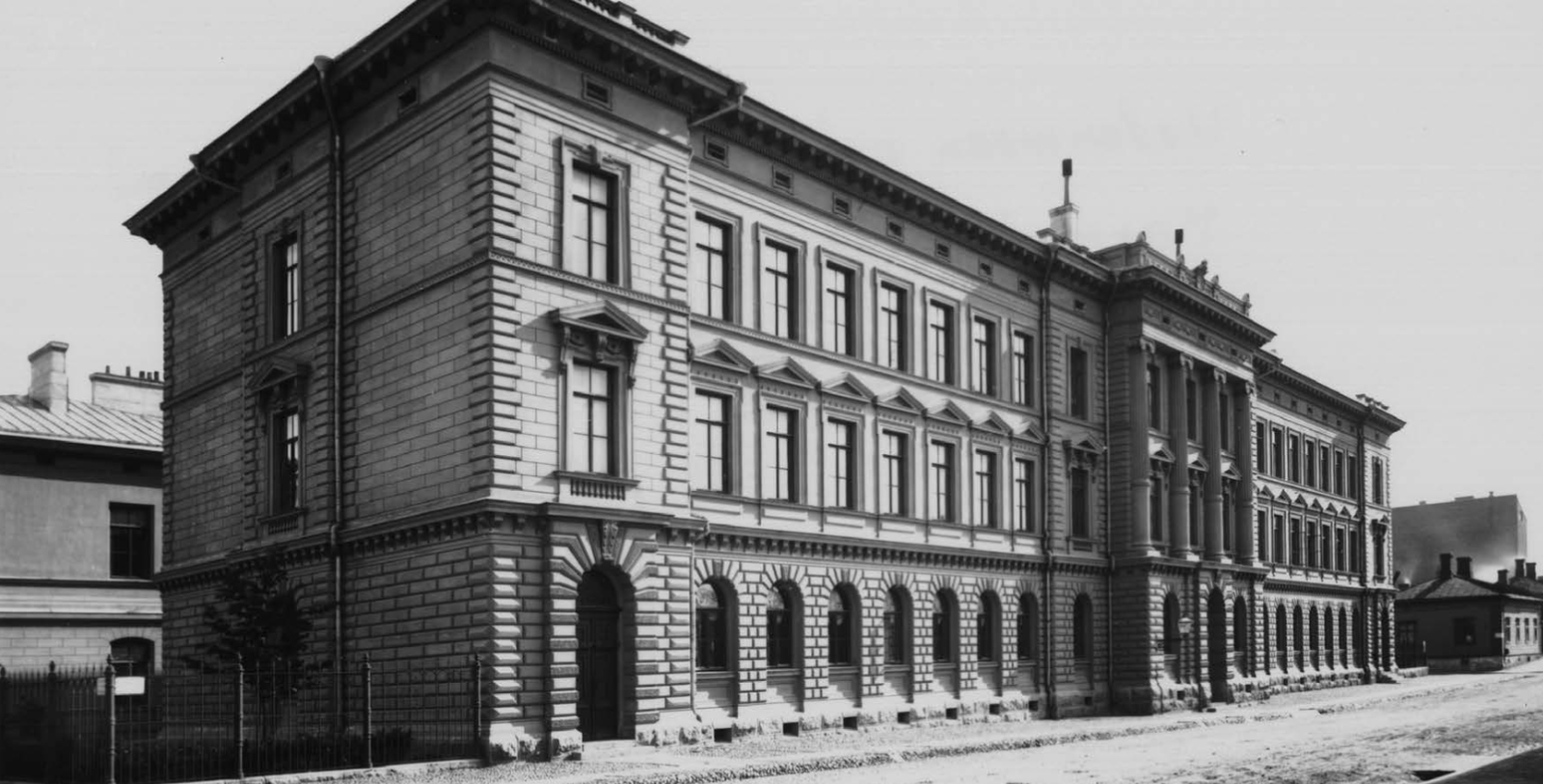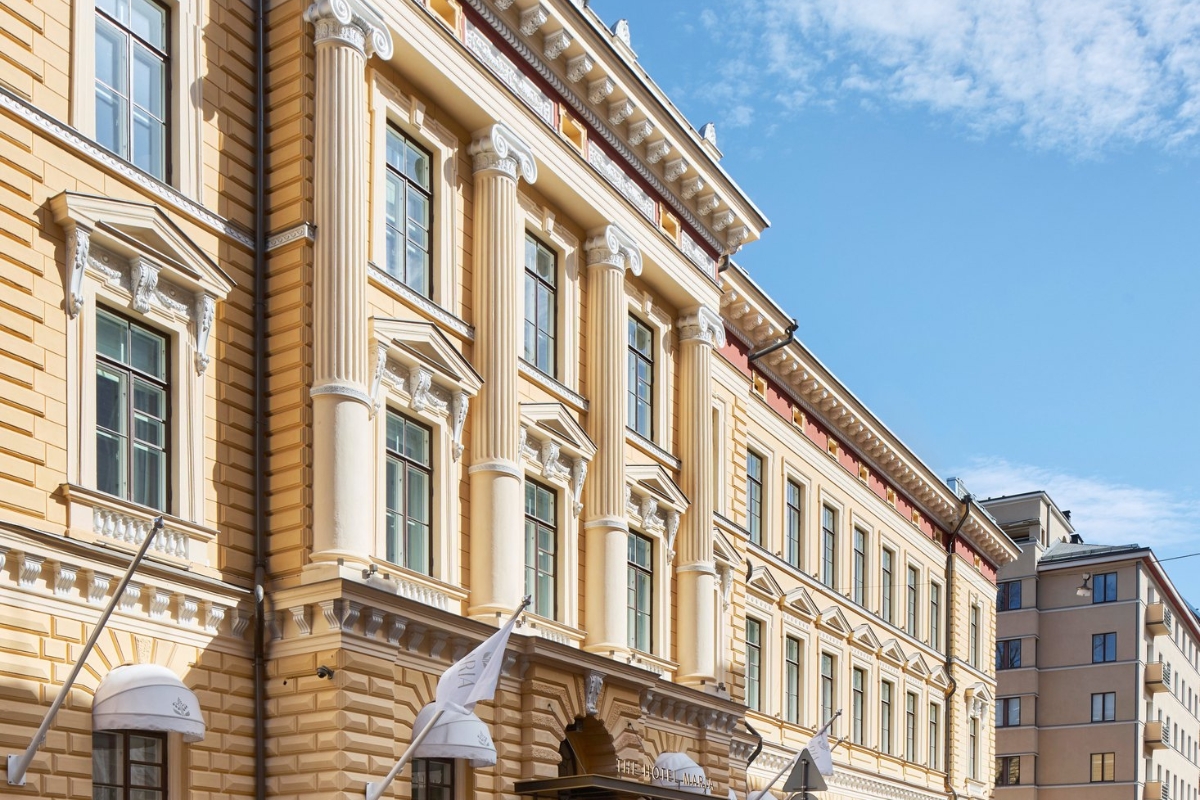Receive for Free - Discover & Explore eNewsletter monthly with advance notice of special offers, packages, and insider savings from 10% - 30% off Best Available Rates at selected hotels.
the hotel maria history
One of Finland’s first military institutions, the hotel’s complex was a significant target in the late nineteenth and early twentieth centuries.
The Hotel Maria, a member of Historic Hotels Worldwide since 2024, dates back to 1885.
VIEW TIMELINEWhen Tsar Alexander II of Russia rose to power in the mid-19th century, he began a series of significant political reforms that sought to modernize the sprawling Russian Empire. Among the territories that received much of his attention was Finland, then ruled as a constituent duchy by the Russian crown. Since the country’s integration into Russia during the Napoleonic Wars, Finland was subjected to many laws that relegated its population to second-class status. But unlike earlier rulers, Alexander wished to strengthen Finnish society within the Russian state. To that end, he went about passing edicts that improved everything from the Finnish education system to local monetary policies. The Finns had even secured the right to maintain their own military, which the main regional legislative body—the Diet of Finland—directly supervised. Thousands of men were thus conscripted to serve in the newly minted Finnish army, gradually forming around a dozen infantry battalions. Although some barracks were already standing at the time, Finland’s administrators still rushed to raise additional structures capable of sheltering the nascent units. (For reference, those preexisting buildings had housed small garrisons of Russian soldiers.) Finnish officials selected Helsinki to host most of the prospective structures, given its status as the provincial capital. They then tasked Evert Lagerspetz—head architect of the city’s General Board of Public Buildings—to complete the daunting project.
Working alongside the Helsinki Barracks Construction Committee, Lagerspetz proceeded to design a stunning complex of colossal edifices that were practical, yet aesthetically pleasing to the eye. Impressed, the Finnish Diet formally approved Lagerspetz’s blueprints in the early 1880s, with construction beginning immediately in Helsinki’s historic Kruununhaka neighborhood. Taking several years to finish, the compound soon dominated the surrounding skyline due to its towering stature and eclectic architectural appearance. The sheer size of the facility was staggering, too, constituting numerous auxiliary structures that contained such services like a laundry, an armory, and an officer’s club. There were even living spaces available for family members of the enlisted personnel and an instructional academy for non-commissioned officers! When the work finally concluded on the expansive new barracks, the stunning complex quickly emerged as one of the most iconic locations in all Helsinki. It also became a site of frequent military activity, with some 500 members of the Finnish Uusimaa Sniper Battalion training regularly on the grounds. Their stint inside the beautiful structures proved to be brief though, as Russia eventually abolished the Finnish army in the early 20th century. Regular Russian soldiers subsequently replaced the battalion, who remained stationed within the barracks for the better part of the next two decades.
Finnish troops then regained control of the premises amid the emergence of an independent Finland after World War I. The reformed Finnish army resumed using the complex in turn, going as far as to establish the very headquarters of its general staff on-site! Nevertheless, the Finnish army eventually came to view the site as outdated and moved to another location during the 1920s. Several government organizations inhabited the compound over the following years in consequence, including the Finnish Agricultural Board, Housing Board, and Ministry of Forestry. A portion of the erstwhile barracks were even converted to accommodate Finland’s national military museum, the Sotamuseo! However, four of the surviving structures gained a new lease on life when former Olympic athlete Samppa Lajunen and his investment firm, Samla Capital Oy, acquired them in 2020. Intent on preserving their fascinating heritage, Lajunen and his team endeavored to readapt the buildings to operate as a single luxurious hotel. The renovations were a considerable undertaking, requiring the utilization of intricate schematics that carefully saved each structure’s distinctive architectural character. But the work was a stunning success nonetheless, with the historic installation debuting as “The Hotel Maria” to great acclaim in 2023. Now one of Helsinki’s most fascinating holiday destinations, the future of this wonderful historic landmark has never been brighter.
-
About the Location +
Although the city of Helsinki was founded amid Europe’s Early Modern Period, people have lived in the greater Uusimaa region for many generations. Archeological research has shown that the area was populated by dozens of historic bucolic settlements, the most ancient of which dates back to the Iron Age. Modern scholars cite the presence of a rich seafaring trade network as the primary incentive for settling the location, with countless ships crossing the neighboring Gulf of Finland to reach markets further south along the Baltic Sea. Many distinctive goods left those quaint Finnish ports, most notably timber and agricultural products. Over time though, the Finns gradually directed their trading toward the affluent Estonian metropolis of Tallinn. A member of the prosperous medieval guild known as the “Hanseatic League,” Tallinn had emerged as one of the continent’s most principal economic centers by the height of the Middle Ages. Great wealth flowed into the city in turn, enabling its civic leaders to finance gorgeous building projects that majestically transformed its expansive skyline. Seeking to replicate that lucrative business activity, the Swedish monarchy, which then ruled over Finland, decided to develop a rival seaport that could match Tallinn in both prosperity and prestige. Then, King Gustav I of Sweden enacted the plan during the 16th century, specifically commissioning the creation of the first municipal structures in 1550.
The king subsequently ordered the merchant classes from nearby villages to populate the settlement, which soon came to bear the name “Helsinki.” However, Helsinki’s location near the mouth of the Vantaa River prevented its residents from creating the deepwater port that was necessary to conduct maritime commerce. Helsinki failed to grow any further as a result, remaining small in stature for the next several decades. Recognizing the hopelessness of the situation, a noblemen named Per Brahe the Younger eventually coordinated the rebuilding of Helsinki’s downtown core a few miles away on the more accessible Helsinginniemi peninsula in 1640. Now possessing an actual harbor, Helsinki finally managed to entertain mercantile vessels in substantial numbers. But this newfound prosperity made the city a significant target, prompting the Swedish government to erect a notable series of naval fortifications around the beginning of the 18th century. Centered on an island just off the coast of Helsinki, the new, massive Suomenlinna citadel did much to safeguard the local shipping lanes upon its completion. Nevertheless, Helsinki and the rest of Finland were absorbed into the greater Russian Empire following the defeat of Sweden during the Napoleonic Wars. As the largest city in the country at the time, the Russians proceeded to make Helsinki the capital of their nascent “Duchy of Finland” territory.
The designation bore considerable consequences for the community, as the political patronage spurred widespread industrialization throughout much of the 19th century. Helsinki also saw its infrastructure modernized, while numerous towering administrative and military complexes made their debut. The proliferation of such construction gradually transformed the city’s appearance, rendering it as one of the most beautiful in all Europe. Russian rule itself eventually ended amid World War I, with the Finnish proclaiming their independence as a sovereign people in 1917. Helsinki emerged as the national capital for an independent Finland soon thereafter—a title that it has since maintained in the present. Helsinki today continues to be the most culturally important city throughout Finland, serving as host to many prominent Finnish educational, financial, and political institutions. But the city has also developed a thriving tourism industry, as thousands of contemporary international travelers have visited regularly to discover its fascinating heritage. In fact, the destination is home to many fascinating cultural heritage sites, such as the Helsinki Cathedral, Senate Square, the Helsinki Olympic Stadium—site of the 1952 Summer Olympics—Old Market Hall, and the UNESCO-recognized Suomenlinna fortress. Few places in Europe are truly better for a memorable vacation experience than the Finnish capital of Helsinki.
-
About the Architecture +
While the buildings that constitute The Hotel Maria today highlight a variety of architectural styles, the most prominent is Classical Revival. Also known as “Neoclassical,” Classical Revival architecture itself is among the most common architectural forms seen throughout the world today. This wonderful architectural style first became popular in Paris, specifically among French architectural students who had studied in Rome during the late 18th century. Upon their return home, the architects began emulating aspects of earlier Baroque aesthetics into their own designs before finally settling on Greco-Roman examples. Over time, the embrace of Greco-Roman architectural themes spread across the globe, reaching destinations like Germany, Spain, and Great Britain. As with the equally popular Revivalist styles of the same period, Classical Revival architecture found an audience for its more formal nature. It specifically relied on stylistic design elements that incorporated components like the symmetrical placement of doors and windows, as well as a front porch crowned with a classical pediment. Architects would also install a rounded front portico that possessed a balustraded flat roof. Pilasters and other sculptured ornamentations proliferated across the façade of the building, too. The most striking feature of buildings designed with Classical Revival-style architecture were massive columns that displayed some combination of Corinthian, Doric, or Ionic capitals. With its Greco-Roman temple-like form, Classical Revival-style architecture was considered most appropriate for municipal buildings like courthouses, libraries, and schools. But the form found its way into more commercial uses, including banks, department stores, and hotels. Examples of the form can be found throughout many major cities, including London, Paris, and New York City. Architects even rely on Classic Revival architecture today, highlighting its continued status as one of the world’s most ubiquitous architectural styles.


























